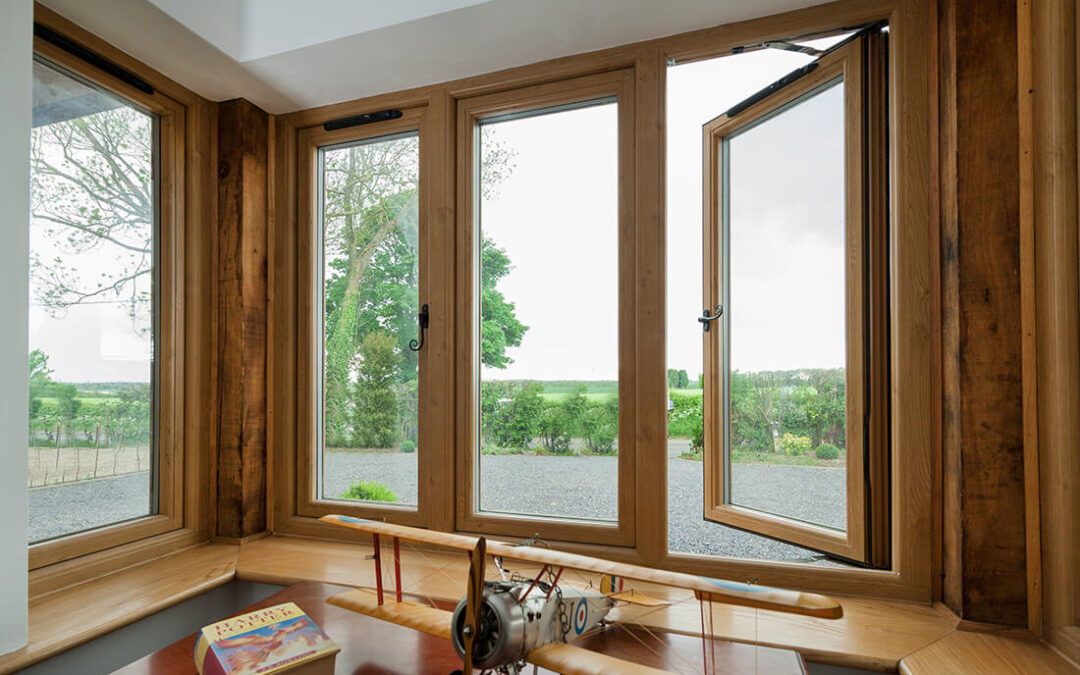Casement windows are a popular choice among homeowners due to their unobstructed views, excellent ventilation, and ease of operation. With hinges on one side and a crank mechanism for opening and closing, casement windows offer a unique combination of functionality and aesthetics. In this blog post, we will explore the benefits of casement window installation, as well as the process and factors to consider when choosing this window style.
1. Benefits of Casement Windows
Unobstructed Views
One of the most significant advantages of casement windows is their ability to provide unobstructed views. Unlike double-hung or sliding windows, which have sashes that divide the glass, casement windows feature a single large pane of glass. This design allows for clear, uninterrupted views of the outdoors, making them an excellent choice for rooms with picturesque surroundings.
Superior Ventilation
Casement windows are known for their exceptional ventilation capabilities. When fully opened, the entire window area is exposed, allowing for maximum airflow into your home. This feature can be particularly beneficial in rooms that require additional ventilation, such as kitchens and bathrooms.
Enhanced Security
The locking mechanism on casement windows is embedded within the frame, making it difficult for intruders to pry open the window. Additionally, casement windows typically have fewer points of entry than other window styles, increasing their overall security.
Energy Efficiency
Casement windows are highly energy-efficient due to their tight seal when closed. The sash presses against the frame, creating an airtight seal that prevents drafts and air leaks. This feature can help reduce your heating and cooling costs and maintain a comfortable indoor temperature.
2. Casement Window Installation Process
Initial Consultation and Measurements
The first step in the casement window installation process is to schedule a consultation with a professional window installer. They will assess your home’s current windows, discuss your needs and preferences, and recommend the best casement window options for your situation. The installer will also take accurate measurements of your existing windows to ensure a proper fit.
Window Selection and Customization
After the initial consultation, you can choose the specific casement window style, material, and color that best suit your home’s aesthetics and your personal preferences. Many casement windows are customizable, allowing you to select additional features such as decorative grilles, hardware finishes, and energy-efficient glass options.
Installation Day
On the day of installation, the window installer will:
- Remove the old windows and prepare the opening for the new casement windows.
- Install the new casement windows, ensuring they are level, square, and properly aligned.
- Insulate and seal around the new windows to prevent drafts and air leaks.
- Test the operation of the casement windows to ensure smooth and secure function.
- Clean up the work area and dispose of the old windows.
3. Factors to Consider When Choosing Casement Windows
Material Options
Casement windows are available in various materials, including wood, vinyl, aluminum, and fiberglass. Each material has its advantages and disadvantages in terms of durability, maintenance requirements, and appearance. Consult with your window installer to determine the best material for your needs and preferences.
Window Size and Placement
Consider the size and placement of your casement windows to maximize their benefits. Larger casement windows can provide more natural light and greater ventilation, while strategically placed windows can take advantage of prevailing breezes for improved airflow.
Local Building Codes and Regulations
Before installing casement windows, check your local building codes and regulations to ensure compliance. Some areas may have restrictions on window size, placement, or egress requirements, particularly in bedrooms.
Casement window installation can greatly enhance your home’s appearance, ventilation, and energy efficiency. By understanding the benefits and installation process, as well as considering factors such as material, size, and placement, you can make an informed decision about whether casement windows are the right choice for your home. Consult with a professional window installer to discuss your options and ensure a successful installation that will provide lasting enjoyment and functionality.

